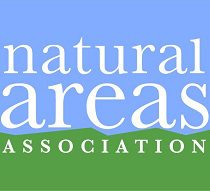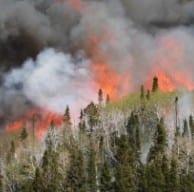Restoration
Webinar recording.
The Society for Ecological Restoration (SER) has co-authored a new set of “Standards of Practice to Guide Ecosystem Restoration”, launched this year in partnership with the FAO and IUCN-CEM as a contribution to the United Nations Decade on Ecosystem Restoration. Furthermore, various principles and standards guidance have been released or are under development since 2019, including the WWF-SER Mediterranean forest project certification standards, aiming to verify the quality of field-based restoration projects, providing guidance, structure, and an auditing process for ecological restoration.
In this SUPERB/IUFRO Forest Restoration Talk, organised in collaboration with SER, George Gann, SER’s International Policy Lead, presents an overview of the new Standards of Practice including insights from the Mediterranean project, discussing how these can support the design, implementation, and funding of restoration actions.
He is joined by Dr.Michael Kleine, Deputy Executive Director & Coordinator at IUFRO’s Special Programme for Development of Capacities, who provides views from a science and training perspective with reference to existing forest-related restoration guidelines, sharing experiences with implementing some of these on the ground.
View article.
The sagebrush biome is a dryland region in the western United States experiencing rapid transformations to novel ecological states. Threat-based approaches for managing anthropogenic and ecosystem threats have recently become prominent, but successfully mitigating threats depends on the ecological resilience of ecosystems. We used a spatially explicit approach for prioritizing management actions that combined a threat-based model with models of resilience to disturbance and resistance to annual grass invasion. The threat-based model assessed geographic patterns in sagebrush ecological integrity (SEI) to identify core sagebrush, growth opportunity, and other rangeland areas. The resilience and resistance model identified ecologically relevant climate and soil water availability indicators from process-based ecohydrological models. The SEI areas and resilience and resistance indicators were consistent – the resilience and resistance indicators showed generally positive relationships with the SEI areas. They also were complementary – SEI areas provided information on intact sagebrush areas and threats, while resilience and resistance provided information on responses to disturbances and management actions. The SEI index and resilience and resistance indicators provide the basis for prioritizing conservation and restoration actions and determining appropriate strategies. The difficulty and time required to conserve or restore SEI areas increase as threats increases and resilience and resistance decrease.
View factsheet and article.
It is not well understood whether desert plantings can facilitate recruitment of other natives (or mainly just non-natives), or whether facilitation changes through time as a restoration site matures. To address these uncertainties, we partnered with the National Park Service to study plant community change below planted perennials and in interspaces (areas between perennials) during 12 years (2009-2020) in Joshua Tree National Park, California, in the southern Mojave Desert.
View article.
This study used geospatial seed transfer zones as our focal management areas. We broadly considered generalized provisional seed transfer zones, created using climate and stratified by ecoregion, but also present results for empirical seed transfer zones, based on species‐specific research, as part of our case study. Historic fire occurrence was effective for prioritizing seed transfer zones: 23 of 132 provisional seed transfer zones burned every year, and, within each ecoregion, two provisional seed transfer zones comprised ≧50% of the total area burned across all years. Fire occurrence within PACs largely reflected the seed transfer zone priorities found for the ecoregion as a whole. Our results demonstrate that historic disturbance can be used to identify regions that encounter regular or large disturbance. This information can then be used to guide seed production, purchase, and storage, create more certainty for growers and managers, and ultimately increase restoration success.
Rising from Ashes: A Tribe’s Nature-based Approach to Watershed Restoration will highlight an innovative and iconic case study in public and private collaboration on sovereign tribal lands following a series of catastrophic wildfires. Given the increasing frequency of these fires, there is a vital need to mitigate destruction through preemptive nature-based restoration practices before disaster strikes. By collaborating with federal agencies and other partners to incorporate indigenous knowledge and values into the recovery planning process, the Santa Clara Pueblo is working to achieve long-term, sustainable resiliency of the watershed.
The purpose of this Stewardship in Action Field Workshop is not simply to share what was learned by the Santa Clara Pueblo and their many partners, but also to engage land and water management practitioners from tribal nations, federal and state agencies, and nonprofit organizations from around the continent to share information and leverage success for the benefit of local communities.
The agenda features three days of content featuring both indoor presentations and field experiences. Sessions will explore public and private collaboration on sovereign tribal lands, process-based restoration and watershed resilience, forestry and fire management, sediment stabilization, native plant restoration, indigenous knowledge, nature-based solutions, and preparing for future climate impacts by working together.
View webinar recording.
The South Central Climate Adaptation Science Center (SC CASC) highlighted one of their funded projects, Time to Restore: Connecting People, Plants, and Pollinators, through the webinar series – The Southern Plains Climate Science Webinar Series.
Watch to learn how this project involves the pollinator restoration community through the entire process to assist them with climate-informed guidance on the timing of nectar plant flowering and seeding. Better knowledge of climate impact on flowering and seed timing for critical nectar plants can inform more resilient restoration plantings.
Jane Breckinridge, the Director of the Tribal Alliance for Pollinators, and Erin Posthumus, the Outreach Coordinator for the USA National Phenology Network and the Principle Investigator of this SC CASC-funded project, will share their perspectives on this project which recently received a second funding award to continue their work.
View videos.
Native Seeds: Supplying Restoration is a nine-part video series that explores the native seed supply chain in the western United States. Filmed over four seasons, this series weaves together footage of seed collectors, farmers, researchers, and land managers working to scale up the supply of native seeds to meet the growing restoration demand. We see the staggering scale of damage to vast landscapes and meet tenacious people who are finding creative, scrappy solutions to restore ecosystems.
Webinar recording.
The Bureau of Land Management (BLM), in collaboration with the Society of Ecological Restoration’s International Network for Seed-based Restoration (SER-INSR), The Nature Conservancy (TNC), and Holden Films, produced a series of educational documentaries that explore each step of the native seed supply chain in one of the largest and most sophisticated native seed markets in the world, the Western United States. Episodes of the nine-part series have been released weekly throughout the summer (June 29 – August 24, 2023) and can be viewed on ser-insr.org/native-seed-film.
In this webinar, representatives from BLM, SER-INSR, TNC, and Holden Films will discuss the production of the video series from both a scientific and cinematographic perspective and share stories of this incredible journey.
The panel discussion will be followed by a Q&A session with the audience.
Meeting webpage.
Please mark your calendars for the 2023 8th Annual Montana Forest Collaboration Network Workshop November 2-3 in Missoula at the Hilton Garden Inn. This year, the Workshop is being held jointly with the Idaho Forest Restoration Partnership. This year’s theme: Collaborative Investment.
November 2, 2023: 1:00 pm-5:00 pm MDT
November 3, 2023: 8:00 am-Noon MDT
The Workshop Agenda includes a keynote address by the Bureau of Land Management Director Tracy Stone-Manning.
Webinar recording.
This presentation examines how post-fire planting success is influenced by climatic, microclimatic, topographic, and biotic factors. Multiple seedling planting experiments across northern New Mexico were evaluated using seedling monitoring, remote sensing, drone, and microclimate data. The results show tree seedling survival in high severity burn patches is largely determined by microclimatic refugia formed by both topographic variation and existing vegetation. Using machine learning and a new index of seedling survival probability, the most suitable artificial reforestation sites can be mapped for efficient restoration planning. This presentation posits that success rates of reforestation efforts in post-wildfire landscapes could be substantially increased by considering site survivability and suitability.






